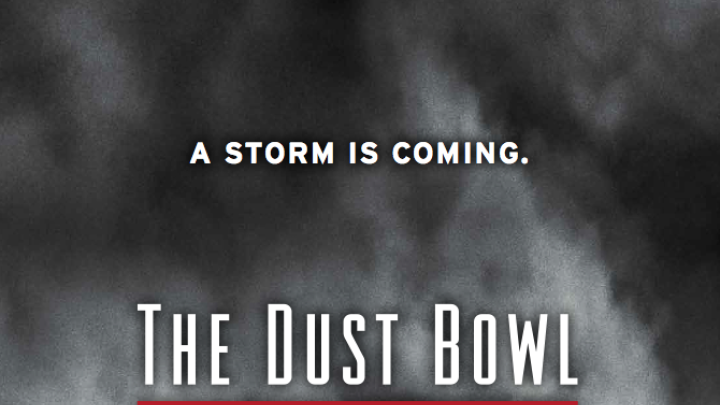Cal Crabill took one look at the “black blizzard of a cloud” on the horizon and started running. His home in the 500-person town of Holly, Colorado, was three miles away, and his family’s cattle and horses were outside, exposed to the terror of the impending storm before his eyes. Somehow he got back in time to get them into the barn, but that didn't save them—they died from the extreme dust that filled the air like thick smoke. “All hell broke loose,” Crabill later recalled, having watched his family's livelihood perish in a dust storm.
“These storms moved dirt clear across the country…ships out in the Atlantic were covered in a patina of dust,” explained documentary filmmaker Ken Burns, who spoke at the University today as the guest of Harvard University’s Center for the Environment about his most recent film, The Dust Bowl, a two-part Public Broadcasting System special that will air at 8 p.m. EST on November 18 and 19. “They were shoveling out that same dirt from Chicago by the inch full. Another storm rearranged and moved more dirt in one 24-hour period than the entire U.S. excavation project did in building the Panama Canal.”
In his talk, Burns vividly recalled the 10-year “apocalypse” of severe dust storms that ravaged the American and Canadian prairie lands in the 1930s—one of the worst man-made environmental disasters in history—damaging millions of acres of farmland and displacing hundreds of thousands of families in the midst of the Great Depression. The storms not only killed people’s crops and cattle but also took the lives of their children. The backbone of the film, he said, are the 26 Dust Bowl survivors his team interviewed, who were children and teenagers at the time and are now in their eighties and nineties. Their testimony, interspersed with grainy black and white footage of large looming dust clouds enveloping the prairie and blacking out the sun, played on a large projection screen in Fong Auditorium as Burns showed several clips from the film.
“You could hardly avoid looking to the west to see if you could see this rim of dust that was rising on the horizon,” said Shirley Forrester Mckenzie, the fourth of nine children in a family that migrated to California in 1936 because of the storms. “It was earth-colored, way far away, beginning to rise, and perhaps the next day it would be bigger and come quicker and higher, and then suddenly you were just engulfed and you couldn’t see the sun. Day after day it was dark, black, scary.”
In a Q&A with the audience, Burns discussed the challenges of making the film, the overall art of storytelling, and the parallels between the Dust Bowl tragedy and modern disasters. “It is so cautionary, in that so many of the aspects remind us of today,” he said. “Not just climate change, but so many aspects of what happens in great natural disasters of human tragedies—all of the folly of human beings, but also all of their resourcefulness and grit.”







